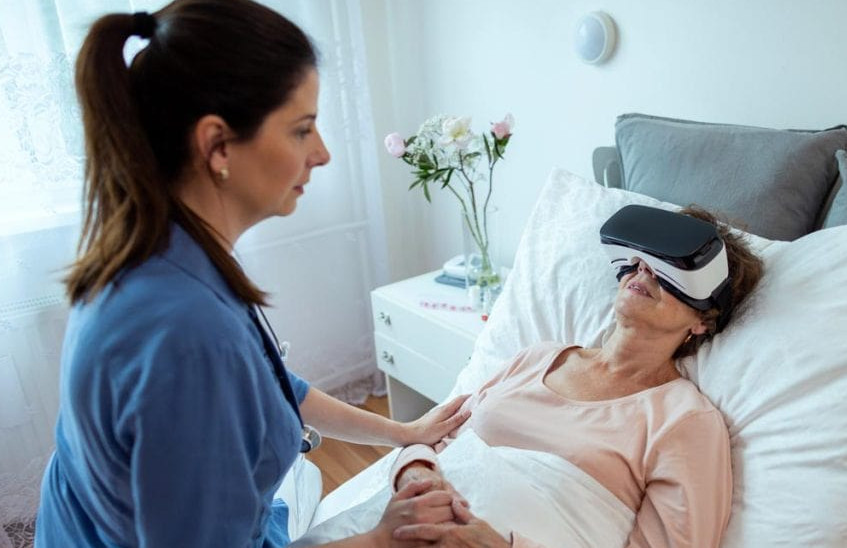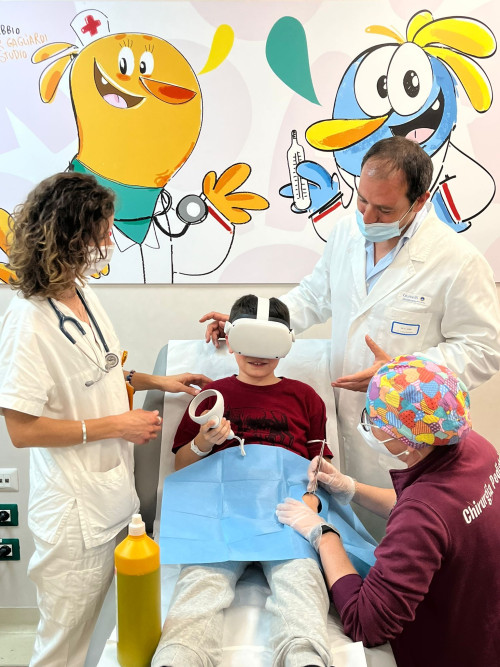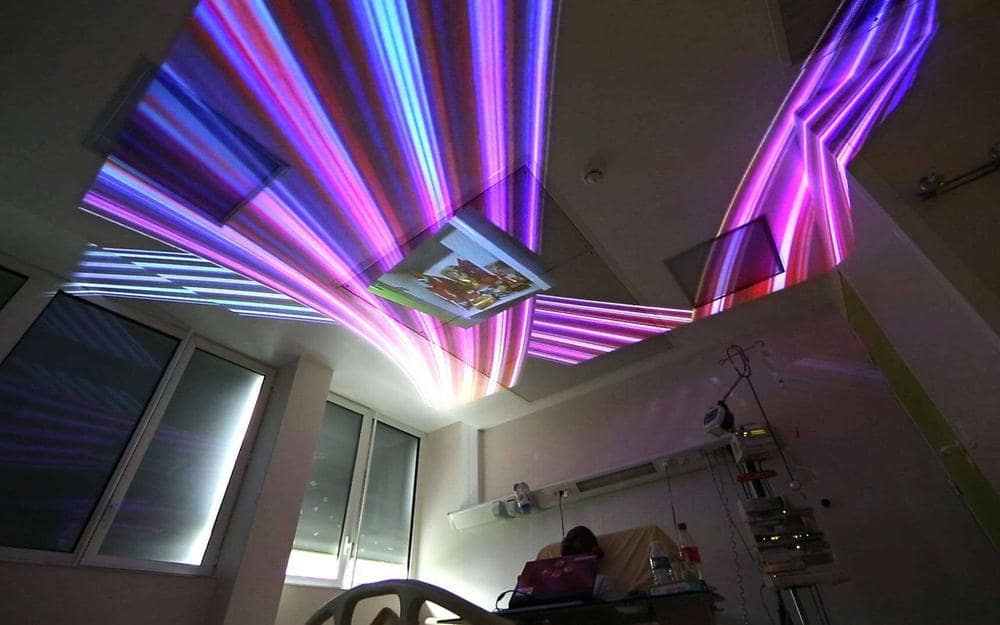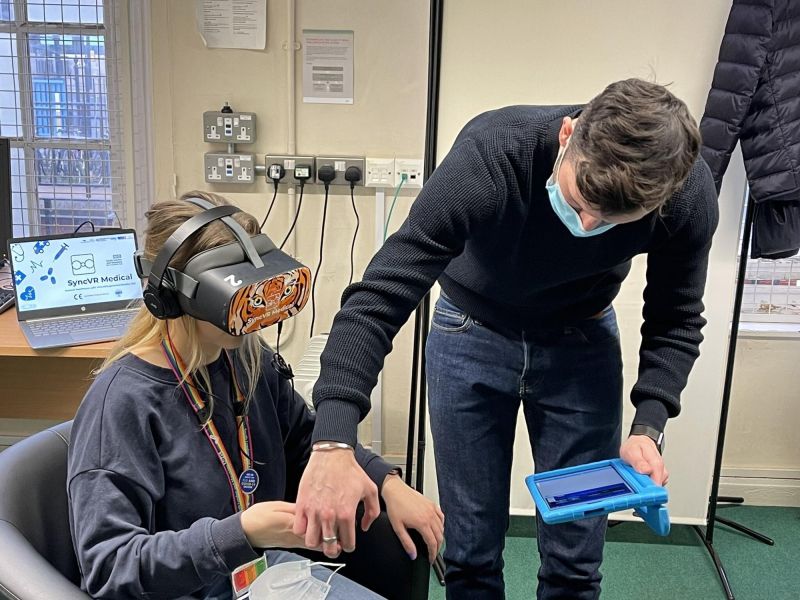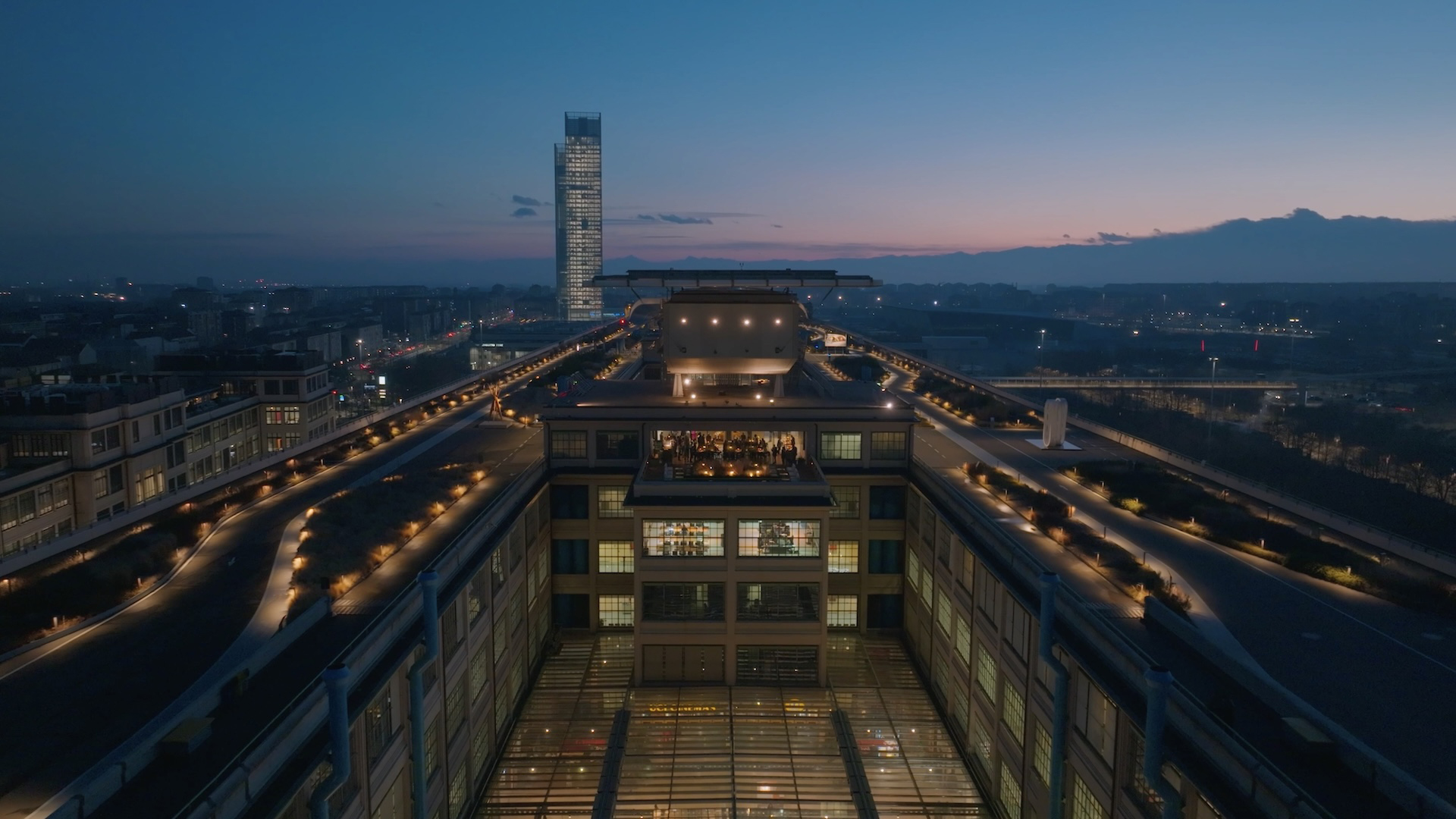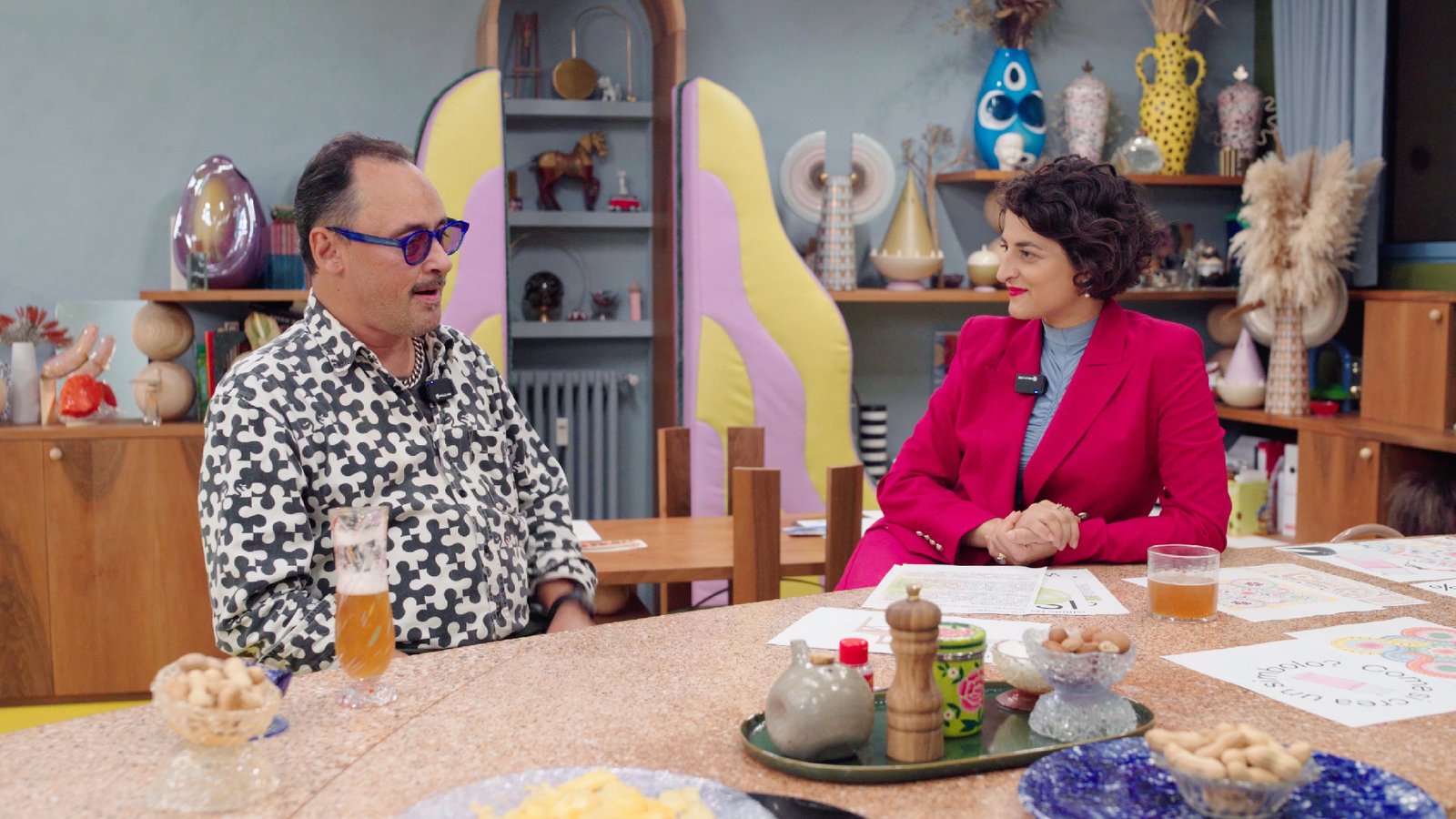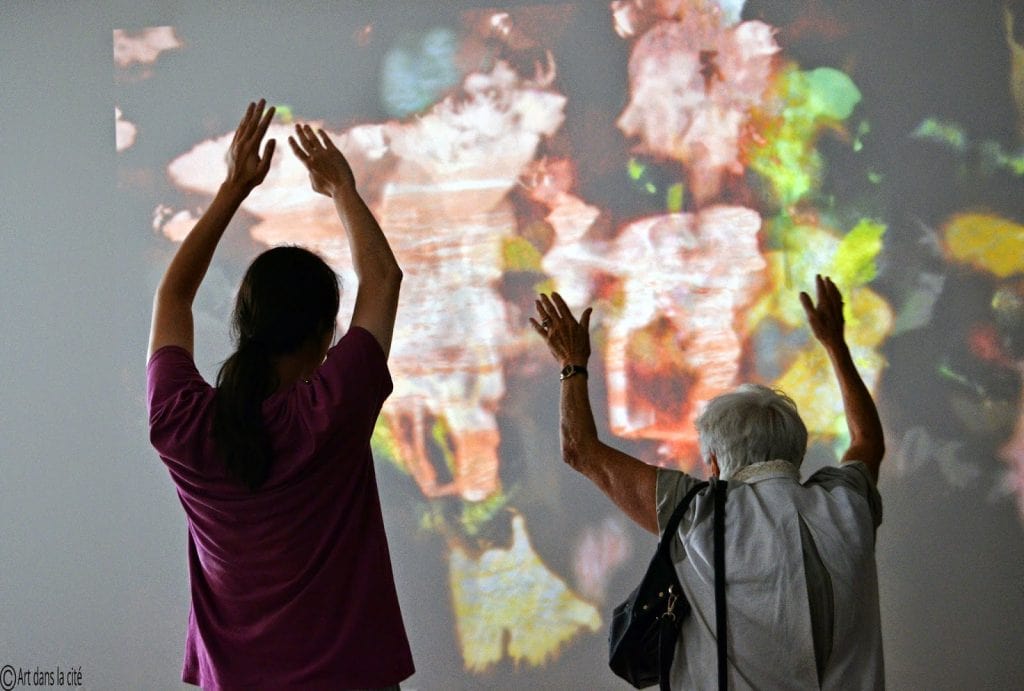
Therapeutic technology: augmented virtual reality to ease pain and isolation.
How Immersive Reality transforms Healthcare, Well-Being, and Quality of Life
Thanks to the specialization of medicine, it has become possible to target symptoms and diseases with increasing precision, transforming conditions that were once fatal into manageable chronic illnesses. However, chronicity brings with it a complex burden of treatments, medical visits, tests, and often lifelong medication. In this scenario, the concept of precision medicine has emerged, revolutionizing therapeutic approaches and enabling more effective and personalized treatments. Yet, while this evolution has led to extraordinary results, the human element has often been overlooked.
It is common for the side effects of targeted therapies to significantly compromise a patient’s quality of life, causing secondary disorders that affect both physical and psychological well-being. Circulatory issues, persistent skin irritations, and chronic fatigue—phenomena known as off-target effects—become a constant in the patient's daily life, making the treatment journey even more burdensome. In recent years, however, the concept of personalized care has expanded, complementing pharmacological therapies with innovative tools aimed at improving overall well-being. Among these, virtual reality (VR) and augmented reality (AR) are emerging as increasingly integrated support solutions within treatment pathways.
Immersive technologies are being applied in various contexts, from forced isolation following a transplant to long infusion therapy sessions, from prolonged hospital stays to physical and psychological rehabilitation programs. Several scientific studies have demonstrated the significant impact of virtual reality in reducing pain, anxiety, and depression in hospitalized patients. A study conducted at Cedars-Sinai Medical Center in Los Angeles found a 24% reduction in perceived pain and a 40% decrease in preoperative anxiety in patients who used immersive experiences. At Massachusetts General Hospital, cancer patients undergoing chemotherapy reported improved psychological well-being and a lower incidence of stress-related side effects. Sensory isolation, characteristic of many clinical situations, amplifies the perception of pain and distress. In environments devoid of stimuli, the mind tends to focus on negative sensations, making the experience of illness even more overwhelming. Virtual reality intervenes by disrupting this mechanism, offering immersive experiences that divert attention from pain and reduce the emotional burden associated with illness.
 The hematopoietic cell transplant unit at St. James' Hospital. Photograph by Anthony Edwards
The hematopoietic cell transplant unit at St. James' Hospital. Photograph by Anthony Edwards
At this point, a natural question arises: what type of content is integrated into VR headsets to achieve these benefits? As early as the 1980s, Swedish professor Roger Ulrich demonstrated that hospitalized patients with access to views of natural landscapes experienced faster recovery times and required less analgesic medication. Building on this insight and the increasing dissemination of such knowledge, the first medical applications of virtual and augmented reality focused on creating immersive natural environments that promote relaxation and enhance psychological well-being. A pioneering example was developed in Dublin with the Open Windows project at the Denis Burkitt National Blood and Bone Marrow Transplant Unit at St. James’s Hospital.
The inspiration for the project stems from a previous initiative in which Professor McCann, a hematologist and head of the department, commissioned artist Eric Galvin to paint the walls of the ward. The walls were decorated with a mosaic of small squares, featuring the colors of various football teams—a sport deeply rooted in the country’s culture, chosen to create an emotional connection with all patients.
The inspiration for the project stems from a previous initiative in which Professor McCann, a hematologist and head of the department, commissioned artist Eric Galvin to paint the walls of the ward. The walls were decorated with a mosaic of small squares, featuring the colors of various football teams—a sport deeply rooted in the country’s culture, chosen to create an emotional connection with all patients. In 2005, the project took a step further with the creation of Open Windows, once again aimed at improving the quality of life for patients undergoing bone marrow transplants. The goal was to reduce the physical and emotional isolation of patients hospitalized in a unit characterized by strict hygiene protocols, limited spaces, and high risks of infection. The ward, located on the ground floor, lacked a pleasant view, further exacerbating the patients' sense of distress and sadness, already heightened by prolonged hospital stays. The idea for Open Windows was sparked by an incident in which a patient requested a plant to decorate his window, inspiring the concept of bringing the outside world into the hospital ward. However, the flower was given only to that single patient, leaving others without a similar source of comfort. This highlighted the urgent need for a broader change.
Using projectors connected to cameras placed outside, the initiative was able to stream real-time images of natural landscapes, seaside scenes, flowers, and even significant moments from patients' families, such as the birth of a child. This contemplative and relaxing experience proved particularly effective in improving sleep quality and reducing stress, anxiety, and depression within an already challenging healthcare setting. Patients could easily interact with the content using an intuitive remote control, designed to accommodate their fragile health conditions.
Open Windows became the first clinical study to rethink hospital environments and integrate technology into healthcare, laying the foundation for the use of augmented reality as a complementary therapeutic tool. The results were extraordinary—not only for the emotional impact on patients but also for introducing an innovative care model that, it is worth noting, was conceived and tested before the rise of social networks and immersive technologies. This study represents a milestone in the evolution of therapeutic techniques, demonstrating how art, technology, and medicine can converge to alleviate pain and enhance psychological and physical well-being, opening new possibilities for the treatment of severe illnesses.
A second groundbreaking initiative that combines art, augmented reality (AR), and healthcare is Illuminart, a project developed by the Paris-based association Art dans la Cité. This initiative aims to transform hospital rooms through immersive light installations, creating spaces where artistic beauty intertwines with patient well-being. By utilizing digital projections and immersive reality, hospital wards are turned into evocative visual landscapes, reducing the sense of alienation and enhancing the perception of the care environment. The resulting sensory experience not only alleviates stress and anxiety but also fosters emotional and cognitive engagement, which can contribute to psychological and physical recovery. Studies conducted in these hospital settings have shown that incorporating interactive artistic elements significantly reduces patient agitation, helping to humanize the experience of illness. With Illuminart, art is no longer confined to museums but becomes an integral part of the healing process, restoring a sense of wonder and connection with the outside world—even in the most challenging moments.
 Art dans la Cite, Visual Arts in Hospitals, Illuminart Project, Paris
Art dans la Cite, Visual Arts in Hospitals, Illuminart Project, Paris
Let’s move now to the Netherlands, specifically to Amersfoort. SyncVR Medical has demonstrated how virtual reality is becoming an increasingly effective tool for pain management, physical recovery, and psychological well-being. Their platform is currently implemented in over 250 hospitals and covers more than 30 medical specialties, including pediatrics, neurology, oncology, and psychiatry. Thanks to a wide range of immersive applications, SyncVR Medical enables patients to reduce preoperative stress, engage more actively in rehabilitation, and decrease pain perception without the need for additional medication. Numerous scientific studies confirm that the use of virtual reality in clinical settings can reduce analgesic consumption, improve mobility during rehabilitation, and lower anxiety levels—especially in critical departments such as oncology and pediatrics. VR solutions are also being adopted for medical staff training, offering advanced simulations for learning complex procedures and managing emergencies. This work marks a turning point in the integration of technology into healthcare, making virtual reality a tangible component of modern medicine.
As we reach the conclusion of this exploration, it becomes evident that immersive experiences are not only therapeutic tools but also powerful educational instruments. It is not just about learning to manage one’s physical condition, emotions, and mental states better—it is also about exploring new horizons, rediscovering familiar places, visiting museums, or immersing oneself in landscapes that would otherwise be unreachable. Art and culture thus reveal themselves not only as sources of personal enrichment but also as true therapeutic tools capable of positively influencing a patient’s psychological and physical well-being.
 VR as a tool for simulating surgical operations
VR as a tool for simulating surgical operations
makes it a valuable resource in medical education as well, allowing anatomy students to explore the human body interactively and aspiring surgeons to practice realistic surgical simulations. This opens up new frontiers for medical education and practice, but that is a topic worthy of a discussion on its own.
What stands out most is the increasingly central role of technology in the evolution of medicine. The alliance between medical knowledge, culture, and technological innovation is helping to redefine healthcare approaches, bringing us ever closer to a truly patient-centered model, where the human dimension once again becomes the heart of every therapeutic journey.
Cover image: Interactive visual installation, created for the Institut Claude Pompidou in Nice and the Centre Rainier III at the Princess Grace Hospital in Monaco.
She is a cultural designer and doctoral candidate in Medical Humanities and Welfare Polices. Her common thread is caring for people's wellbeing, whether it is behind a stage with Grato Cuore, Rosetum Jazzfestival, a professorship at the Mohole School or research to rethink the design of healthcare environments through artistic interventions. With Spaghetti Boost he will address various topics on the combination of art and sanctity in international and national contexts, proposing how to concretely innovate it.

